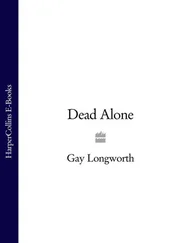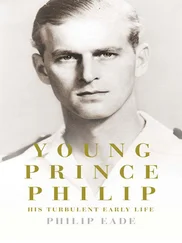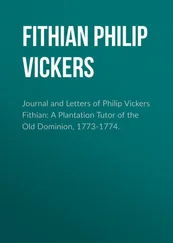Prelates also played significant political roles. When the princes met at Sarai, metropolitans went with them to safeguard the Church’s interest, and at least one bishop was entrusted by the Khan with a mission to Constantinople. 3Churchmen helped to guide the long-term destiny of Russia by their decisions. Metropolitan Petr of Kiev, for example, noticing that the location of power in Russia was moving northward, decided to move his seat of operations from Kiev to Moscow at the invitation of its prince. It was an interesting decision, for at the time Moscow was subordinate to the Grand Principality of Vladimir, even though it had potential to become the strategic centre of the Russian lands. Petr was to develop the see of Moscow into the premier seat of the Orthodox Church in Russia. Buried in the Kremlin’s Cathedral of the Assumption, which became the traditional resting place for Russian primates, he was to be venerated as one of Russia’s more significant political saints. 4For Russians, faith and politics were never to be far apart.
Another saint of the age, though more obviously spiritual, was hardly less important for Russia’s development. This was the charismatic hermit Sergius, who blessed Russia’s champion Dmitrii of the Don before he led his warriors to Russia’s first famous victory over the Tatars, at Kulikovo in 1380. But Sergius accomplished something much more significant for Russia in the long run: he inspired the boom in monastic development. The age also produced Russia’s finest painter, Andrei Rublev, and Stephen of Novgorod, who wrote a cheerful account of a pilgrimage to Constantinople.
Such people contributed in their different ways towards Russia’s revival. But so did the collectivity of souls who for their own individual reasons moved in directions that turned out to be historically significant. And, ironically, the same rapacious Tatars who plundered, disrupted and lorded it over Russia also contributed unwittingly to Russia’s reincarnation by introducing more effective methods of exercising economic and fiscal authority. The Tatars never interfered in the religion of their tributaries. Soon after the conquest they had confirmed the status of the Orthodox Church and confirmed its rights. This policy was not to change when, in the early 1300s, the Tatars abandoned Buddhism for Islam. Indeed, becoming part of the Muslim world expanded the range of Russians’ commercial connections — to the Arabian peninsula and through central Asia to India and China. Yet the old links with western Europe were not severed. The markets for the gleaming glutton pelts, Russian sable and fox furs grew, and prices rose. So, although the conquest disrupted the Russian economy, in the longer term it afforded some compensation. 5
The old connection with Christian Constantinople, on the other hand, lost some of its former commercial importance. The imperial city had become a pale image of its former glory after the crusaders sacked it in 1204. Exchanges still took place, but for the most part they involved churchmen rather than merchants, and, instead of Russians shopping in Constantinople for superior art and technology, Greeks came to Russia holding begging bowls in outstretched hands. When the great dome of St Sophia, the Church of the Holy Wisdom in Constantinople, collapsed in 1346, it was the Russian grand prince Simeon the Proud, the son of Ivan I, who contributed most for the repairs. And this was only one of the grand princes’ many charitable disbursements. The mentors had become the supplicants.
The Tatars had jolted Russians out of their old mould, and by denying them access to the steppe they forced their energies into other directions. What happened as a result is not a question specifically addressed in the chronicles of the time. Yet an enterprising historian at the Academy of Sciences in Moscow, A. A. Gorskii, devised an ingenious method for tracing changes in the relative importance of Russia’s cities which throws light on the problem. He counted the number of times each one is mentioned in the chronicles of each region of Russia over a lengthy period. He found that some place names cease to be referred to, others are mentioned with increasing frequency, and that new place names appear. If frequency of reference reflects importance, then these records indicate the rise and decline of cities and regions over time. In the chronicles of north-eastern Russia, for example, the city of Pereiaslav-Zalesskii is the most mentioned in the first half of the thirteenth century, but in the second half Moscow eclipses it, as does its parent city, Vladimir. Gorskii also found that Kiev is mentioned 44 times in the period 1200 to 1250 in the chronicles of the north-east, and that Halych is the second most frequently mentioned southern city. However, by 1300 Novgorod leads, and it holds its lead into the 1300s. A count of fortified settlements in the century after 1250 has shown that the principality of Chernigov had most, followed by Smolensk in the west, and then Kiev. However, the walls of Volyn and of Suzdal enclosed the largest areas, suggesting a greater concentration of population. Some of the detail may be confusing, but the general trend is clear: whereas the most populous and important cities had been in the south, they were now in the north. The political configuration confirms this finding. The four strongest principalities in the early thirteenth century had been Chernigov, Halych-Volynia, Smolensk and Vladimir-Suzdal. By the early 1300s the first three had ceased to exist, but a new state was being formed on the territory of the fourth. 6
The rising star was the Principality of Vladimir-Moscow. Yet by no means all parts of the first Russia were to cohere around it. One result of the Tatar impact was to send several old Russian centres in the south and west into a different orbit. They were to become part of the rising power of Lithuania. In time the influence of western neighbours on their language and culture caused them to diverge from the remaining Russians. Ultimately their peoples were to become those we know today as Ukrainians and Belorussians. However, despite these substantial losses of territory and population, and the attrition of Tatar rule, Russians were to make a good recovery demographically and go on to settle an area quite out of proportion to their numbers. How this came about is a question that fascinated one of Russia’s most interesting, and neglected, historians, Matvei Liubavskii, 7and it is related to the problem of why first Vladimir and then Moscow became the political centre of Russia.
Liubavskii noticed that the migration was confined to the forest zone. The colonizers avoided the Tatars’ stomping ground, the steppe. He also noticed that settlements were unevenly distributed, scattered, bounded by marshes and impenetrable tracts of forests, Russia’s natural frontiers. The great spread and dispersed character of Russian settlement helps to explain the lack of political cohesion in the old Russia and the failure to create an integrated state. Thanks to the Tatars and the northward movement of population, a new concentration of population allowed a more integrated state to be constructed. However, this did not explain why the principalities of the north-east should have become the fastest-growing sector in all Russia, or why Moscow, a neophyte among Russian cities, in a region that was relatively poor in natural resources and with little transit trade, should become the country’s capital, rather than Novgorod, Russia’s oldest city.
Liubavskii explained this in terms of Novgorod’s lack of an agricultural hinterland. This made it difficult for the city to secure food supplies for a large army, and this precluded its attaining pre-eminence in Russia. Moscow, on the other hand, had come to command a strategic central sector of Russia’s great network of rivers and portages, and developed an adequate agriculture and food supply. It was part of the Grand Principality of Vladimir, ‘a complex of… valuable territories, which were the source of great military and financial resources’. This strength derived in large measure from population growth, and from the extension of colonization, organized by the princes, boyars (their elite retainers) and clergy. But it also owed something to the aggression of its princes, who had to fight for a share of the commercial resources which more prosperous cities like Tver, Novgorod and Pskov already enjoyed, 8and to a new form of monastic development, which, as we shall see, was a reaction to the invasion.
Читать дальше





![Stephan Orth - Behind Putin's Curtain - Friendships and Misadventures Inside Russia [aka Couchsurfing in Russia]](/books/415210/stephan-orth-behind-putin-s-curtain-friendships-a-thumb.webp)





